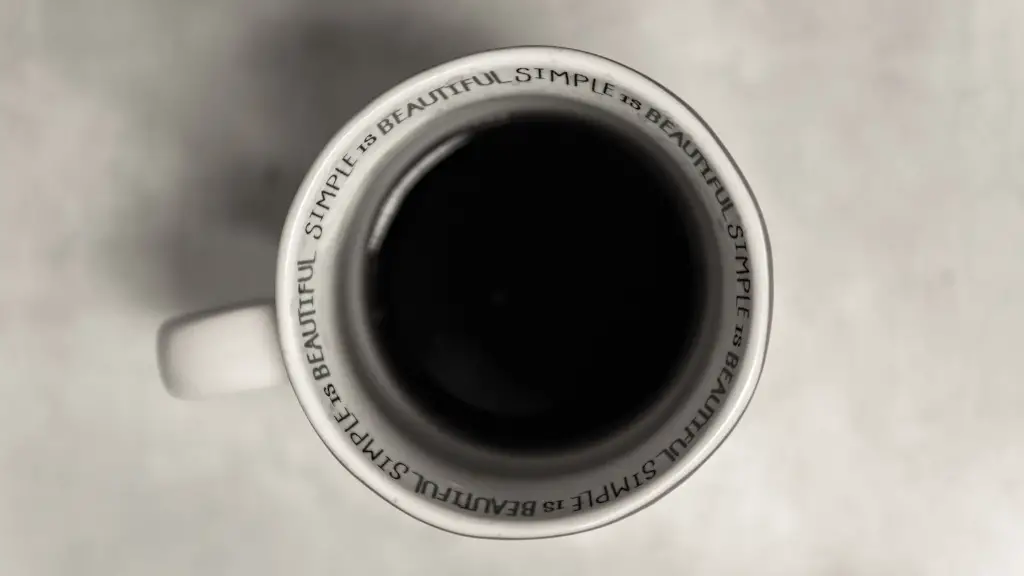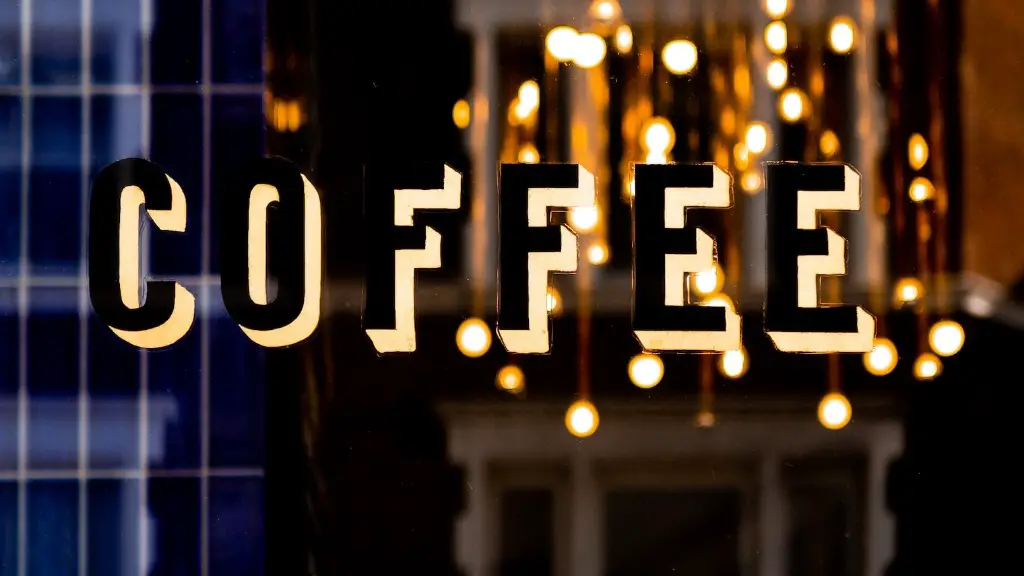To remove caffeine from coffee beans, one can either use the Swiss Water decaffeination method or the ethyl acetate decaffeination method. Swiss Water decaffeination is a chemical-free process that uses water to remove caffeine from coffee beans. Ethyl acetate, on the other hand, is a chemical solvent that can be used to strip caffeine from coffee beans.
There are a few different ways to remove caffeine from coffee beans. One way is to use a process called decaffeination. This involves using water or steam to remove the caffeine from the beans. Another way is to use a chemical process to remove the caffeine. This process usually uses a solvent to remove the caffeine.
Is the decaffeination process harmful?
There are a few different ways to decaffeinate coffee beans, and each method uses different chemicals. Some people are concerned about the potential health effects of these chemicals, but experts say there is no need to worry. If you are looking to minimize your exposure to these chemicals, you can ask your coffee shop or look on the packaging to see which decaffeination method was used.
When making coffee, it is important to pour just enough hot water to cover the grounds. Letting the grounds sit briefly will allow the water to extract most of the caffeine. Pressing the grounds and pouring off the water will finish the extraction process.
What is the healthiest way to decaffeinate coffee
The Swiss Water Process is a chemical-free method of decaffeinating coffee. It was developed in Switzerland in the 1930s and is now used by many coffee producers around the world.
The process involves soaking coffee beans in water to extract the caffein. The water is then passed through a charcoal filter which removes the caffein. The coffee beans are then soaked in the water again to re-absorb the coffee flavour.
The Swiss Water Process is generally considered to be a more gentle and natural method of decaffeination than other methods, such as using chemicals or steam. It is also one of the more expensive methods, but the coffee produced is often of a higher quality.
Supercritical CO2 is a state of matter in which CO2 is at or above its critical point. In this state, CO2 has the ability to act as a solvent and dissolve other materials. Supercritical CO2 has been used in industry to extract caffeine from coffee beans since the 1970s.
Can you decaffeinate coffee without chemicals?
The Swiss Water Process is a 100% chemical free way to decaffeinate coffee. The process uses coffee, water, time and temperature to decaffeinate the coffee. These days Swiss Water resides in Vancouver, Canada, using the high quality water from the Pacific Northwest to decaffeinate coffee from across the globe for consumers around the world!
Decaffeinated coffee may not be harmful, but the chemicals used in the decaffeinating process could be. Methylene chloride, one such solvent used for the removal of caffeine, could be carcinogenic. Some examples include tobacco, asbestos, and alcohol.
Is there a caffeine neutralizer?
Caffeine is a drug that is found in many products including coffee, tea, sodas, and energy drinks. It is also added to some medications. Caffeine is a stimulant and can have effects such as keeping you awake, increasing your heart rate, and increasing your blood pressure.
If you want to get rid of caffeine in your system, the best way to do so is to avoid it altogether. However, if you have already consumed caffeine and are experiencing side effects, there are a few things you can do to help lessen the effects. Staying hydrated, going for a walk, and eating fiber-rich foods are all effective in reducing the side effects of caffeine.
It’s important to stay hydrated, so make sure to drink lots of water. Take a walk to get some fresh air and move your body. Practice deep breathing to help calm your nervous system. And finally, wait it out. The feeling will eventually pass.
Can you burn caffeine out of coffee
Caffeine and physical activity both increase blood pressure temporarily. Drinking caffeine increases adrenaline in the body, and performing a physical activity is the only way to burn it off. Exercise and movement help to break down the caffeine quicker and use the excess energy it provides.
I’m glad to hear that McDonald’s coffee is decaffeinated using the Swiss water method. This is a completely natural decaffeination process that uses only water and no chemicals. So, if you’re looking for a cup of coffee that is both delicious and responsibly sourced, McDonald’s coffee is a great option.
How does Dunkin Donuts decaffeinate their coffee?
Dunkin’ Donuts decaffeinates its coffee through the Swiss Water Process. This involves immersing the beans in water to extract the caffeine. The water is then passed through a filter which removes the caffeine.
Use of decaffeinated coffee may lead to a slight decrease in blood pressure and an increase in heart rate. However, these effects are relatively small and may not be clinically significant.
How do you Degas coffee beans quickly
There are two ways to degas coffee beans – by grinding them and brewing immediately, or by storing them in an airtight container at room temperature for a few days. Both methods allow the gas to escape more quickly, but the latter may provide better results.
chloroform is a better solvent to separate and purify caffeine from solutions. This is because the solubility of caffeine in chloroform is higher than in the other solvents. Thus, chloroform is a better solvent to use when separating and purifying caffeine from solutions.
What enzyme removes caffeine?
Caffeine is almost completely metabolized in the body by cytochrome P450 1A2. This enzyme accounts for the metabolism of caffeine to its principal metabolite, paraxanthine. In vivo, CYP1A2 activity exhibits a significant degree of inter-individual variation.
There are a few different ways that coffee can be decaffeinated. The most common methods are using water or solvent-based processes. Using water, coffee beans are soaked in hot water to release the caffeine. The water is then removed and the beans are dried. The process is repeated a few times to make sure all the caffeine is removed. For the solvent-based method, coffee beans are soaked in a solvent like methylene chloride or ethyl acetate. The solvent removes the caffeine from the beans and is then evaporated. The coffee beans are then dried and roasted. These are the two most common methods for decaffeinating coffee, but there are a few other methods that are used as well.
Why do people drink decaf
There are many reasons why people might choose to drink decaf coffee instead of regular coffee. One of the main reasons is that decaf coffee has less caffeine than regular coffee. Caffeine can have some adverse side effects, so people who are sensitive to it may prefer to drink decaf. Decaf coffee can still provide a subtle energy and mood boost without the side effects.
The direct solvent method is a common method of decaffeinating coffee. It uses methylene chloride or ethyl acetate (a solvent commonly used in paints, varnishes, and cleaning mixtures) to remove some of the caffeine from the beans. The beans are soaked in the solvent, which removes the caffeine.
Final Words
There are a few different ways to remove caffeine from coffee beans. One way is to use a coffee grinder to grind the beans until they are a fine powder. Then, add the powder to a pot of boiling water and let it simmer for a few minutes. After a few minutes, remove the pot from the heat and let it cool. Once it has cooled, strain the coffee powder and discard the water.
Caffeine is a bitter alkaloid that is found in coffee beans. It is soluble in water, so decaffeinated coffee is made by soaking the beans in water to extract the caffeine. The coffee beans are then dried and roasted.





